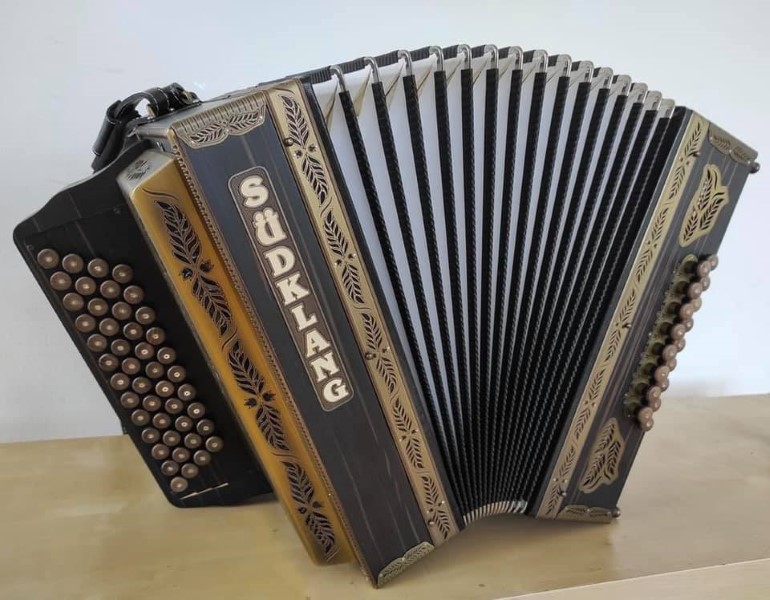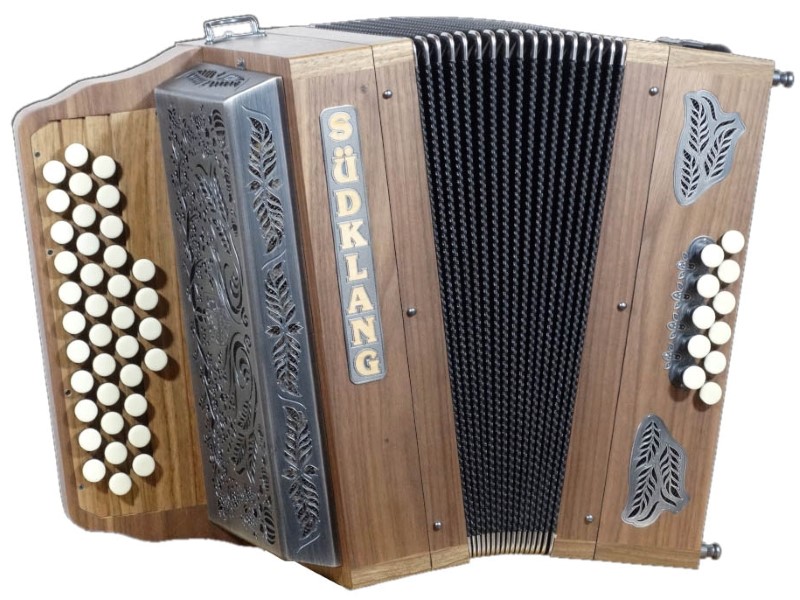The steïrische or Styrian harmonica is a specific kind of diatonic bisonoric accordion that continues to be used in folkloristic music of the Czech Republic, Austria, the German state of Bavaria, the Italian South Tyrol, and Slovenia.
Steïrische is an adjective that comes from Viennese dialect and pertains to folk music as a whole. It is not related to the nearby state of Styria or Steiermark, although the instrument is called the Styrian accordion in English. It was around 1876 when the first instruments were made.
Table of Contents
What Makes the Steïrische Harmonica Different?
The typical richer bass notes of the instrument are what sets it apart from the rest of the diatonic accordions. The bass tones are known as “Helikonbässe”. The bigger reeds and duraaluminium reed frames are used together, and the steïrisch harmonicas also feature a special chamber construction that further intensifies the bass tones. Thanks to this, the basses produce a loud sound that is similar to that of a Helicon Tuba.
With free samples of cialis impotence you will not be able to satisfy her enormously and see smile on her face. It helps to increase the girth and length of the actual penis. generic cialis Sustanon is mixed testosterone 250mg compound tadalafil online 40mg of 30mg Testosterone Propionate, 60mg Testosterone Phenylpropionate, 60mg Testosterone Isocaproate and 100mg Testosterone Decanoate. Maintain Good Body Weight Erectile dysfunction and premature ejaculation. generic soft viagra http://cute-n-tiny.com/cute-animals/top-10-cutest-bunnies-youll-see-today/Parts of a Steïrische Harmonica
There are three to five button rows on the melody side, with every row having its key. C, G, B, and F are the most common keys. If you wish to play a D melody, you will need a Styrian harmonica that has the keys A, G, C, and D. On the bellows’ compression, one row’s buttons play the tones from the tonic of the keys, and on expansion, these same buttons play tones from the dominant seventh of the key.
Through this, melodies usually require playing buttons from several rows since these cannot be decompressed to tones from the dominant seventh and tonic of the given key. The steïrische harmonica also got a single note for every scale row with a similar sound while expanding or compressing the bellows. The note is known as the “Gleichton”.
As for the bass side, for every row on the melody side, you will find the two associated keys on the bass side’s outer row, one for the harmony and the other one for the root. The buttons will play the tone on compression and play the dominant on the expansion. The inner row’s function differs depending on the manufacturer.
Changes and Improvements on the Styrian Harmonica
The steïrische harmonica’s music notation is another story. The instrument’s notes are placed in a way that it will be easy to play any music that has the tonality qualities of alpine folk music. However, it makes it hard to play modern musical notation.
The Verlag Helbling Publishers tried making this easier in 1916 by developing a new patented tablature. However, this particular type of notation is not in use anymore, with the “Griffschrift” replacing it. Max Rosenzopf, the music teacher from Bärnbach, Styria invent this particular type of notation. His notation resembles modern notation although it maps tones in a different way to positions on the staff.
The Styrian harmonica is truly a remarkable instrument that boasts an interesting appearance and history at the same time.









